I Refuse to Share My Inheritance—My Siblings Finally Got What They Deserved

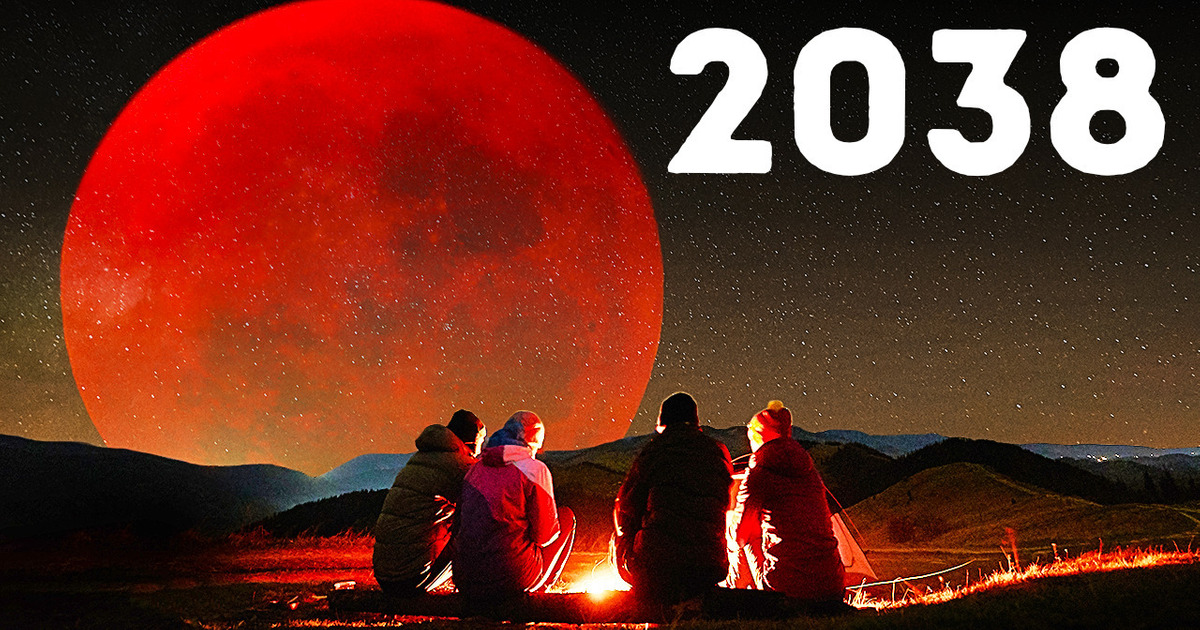
People stop their cars on the highway, get out of them, and lift their heads in wonder. In the cities, everyone takes to the streets. Balconies and rooftops of houses are full of people staring at the Moon in shock. It’s red. Some people scream that it’s the end of the world; some seek shelter.
Indeed, the usual white Moon now looks like it has been doused in red paint. There’s no need to be afraid if you see such a thing. On the contrary, enjoy the view, because you have witnessed a rare astronomical phenomenon. This is a total lunar eclipse.
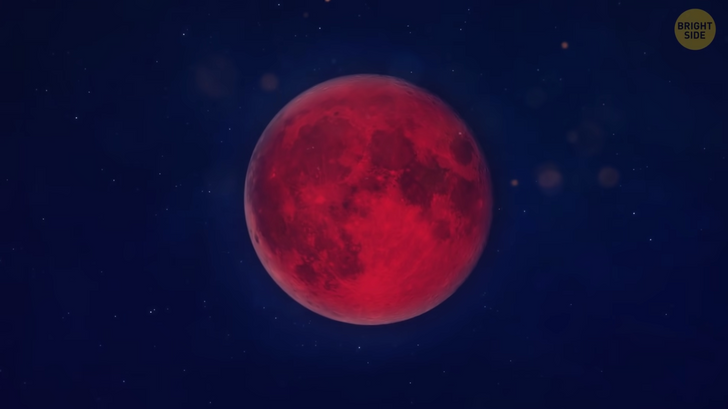
Here’s the Sun; it’s in the center of our solar system. Mercury, Venus, and here’s Earth and the Moon. The Earth takes 365 days to orbit around the star. At the same time, the Moon revolves around the Earth and completely orbits our planet in 27 days. The Earth creates a shadow zone, and sometimes the Moon passes through it. The shadow is cone-shaped and gradually narrows.
The Moon is 238,000 mi [(384,000 km)] away. That’s like 9 lengths of the equator. At this distance, the width of the shadow is about 2.6 times the width of the Moon. When the Moon is in this zone, direct sunlight doesn’t reach it. That is, it should’ve disappeared, but instead, it becomes red.
All because the Sun’s rays pass through the Earth’s atmosphere. They scatter, and most of the blue light disappears. But the red and orange rays continue and hit the surface of the Moon. Voilà! You see a phenomenon called the blood Moon.
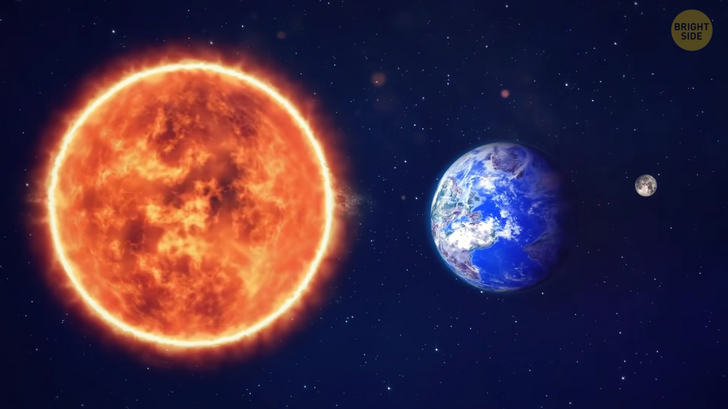
By the way, this curvature of light occurs at sunsets and dawns. The atmosphere scatters the blue light, and you see a red and orange sky. If you were standing on the surface of the Moon during a total lunar eclipse, planet Earth would be exactly between you and the Sun. So you would be able to observe the solar eclipse.
The surface of the Earth would become entirely dark for you. All you’d see would be the Sun’s corona illuminating the edges of the planet. The Earth from the surface of the Moon is almost the same size as the Moon from the surface of the Earth. Such a red eclipse of the Moon is rare because several factors must coincide. One of them is that the Moon must be full. Usually, you can see two total lunar eclipses a year.
In 2038, you’ll be able to see 4 such eclipses. And the eclipse itself can last up to 108 minutes. But this is rare, and the last time such a long blood moon was seen was in 2000. Many years ago, people didn’t know so many facts about our satellite, and the sight of a red moon frightened them. It was a bad sign and a harbinger of trouble. People who knew the schedule of eclipses could take advantage of it.
For example, Christopher Columbus had an astronomical almanac and knew when the next lunar eclipse would occur. He frightened the inhabitants of the Caribbean islands when he “predicted” the red Moon. Once upon a time, the Moon used to be a red ball of lava. This was way back in time, 4.5 billion years ago. This is our solar system. It’s full of dust and asteroids. They’re constantly bumping into each other, playing space billiards.

This is Earth. It’s just beginning to cool off from the constant asteroid and comet impacts. But then Theia appears on the horizon. A planet the size of Mars. It had a chaotic orbit and was approaching Earth in a spiral.
A collision was inevitable, and at one point, one of the biggest crashes in our solar system occurred. Theia struck the Earth at an angle. It ripped out part of the Earth’s crust and threw it into space. The Earth, in turn, absorbed part of the planet that rammed it. The debris from the collision circled the Earth for a long time. They were a kind of ring, almost like Saturn’s.
Debris in orbit collided and piled up around a common center of gravity. And that’s how the Earth got the Moon. There’s a theory that this collision helped give birth to life on our planet. Theia hit the Earth at a perfect angle. If the crash had been head-on, both planets would likely have been destroyed in a massive explosion.
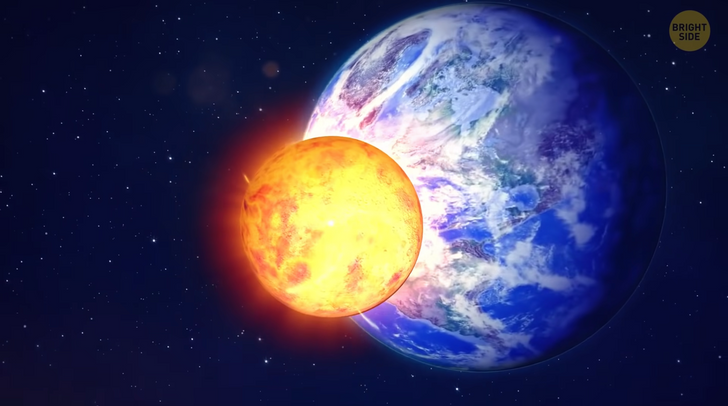
If the impact had been tangential, then there wouldn’t have been enough debris in Earth’s orbit to form the Moon. But we got the lucky ticket. The Moon stabilized the Earth’s rotation. The collision shattered the planet’s solid crust and allowed oceans to form. Remember? Water is the basis of life. When the cores of Earth and Theia merged, we got a powerful magnetosphere. This protects all living organisms from solar radiation.
The Moon, along with the Sun, controls the tides. Its gravity seems to draw water to it from the Earth’s surface. The Sun does the same thing. That is, if we imagine the Earth as a ball of water, there would be two mountains, one on the Moon’s side and one on the Sun’s side. And as the Moon moves around the Earth, this mountain of water moves with it. If you were in the open ocean with a tape measure, you would see that the Moon is attracting water to itself by about 4-6 in [(10-15 cm)].
The Moon is gravitationally locked with the Earth. That’s why it is always turned to us with one side, like Mercury and the Sun. But the Moon doesn’t stand still. It’s gradually moving away from our planet. About 1.5 in [(4 cm)] a year. Not quickly, but in about 600 million years, it will have shrunk in our sky so much that we won’t be able to see lunar eclipses anymore. Do you see this crater?
It’s Tycho. It’s visible during a full moon because of these bright rays that extend thousands of miles from its epicenter. This is the youngest crater on the Moon. Scientists say it appeared there due to a meteorite impact about 109 million years ago. At that time, dinosaurs were roaming the surface of our planet. And they may have seen the impact. It was most likely accompanied by a big explosion and looked like a salute in the night sky.
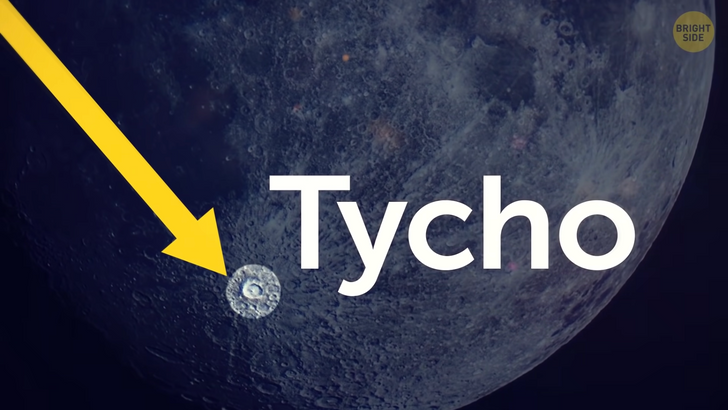
Humanity loves to explore the Moon. We’ve sent a bunch of missions there. A total of 12 people have set foot on the surface of the Moon. The gravitational force there is 6 times less than on Earth. So if the average person on our planet weighed about 180 lb [(80 kg)], on the surface of the Moon the scales would only show 30 lb [(13 kg)]. Like the weight of an average dog.
That’s why the astronauts moved, jumped, and fell so strangely there. And you would be 6 times stronger on the surface of the Moon. Here on Earth, the average person could lift about 130 lb [(60 kg)]. But on the Moon, you could raise a big motorcycle. Or a grizzly bear.
The surface of the Moon is covered with regolith. This is the lunar dust that covers the solid ground. Such dust is good at preserving footprints. Here is the most famous footprint, which gave birth to many crazy theories. Here’s the footprint, and here’s the shoe that left it. But the shoe is completely flat! This is explained simply: the astronauts wore extra boots for walking on the lunar surface.
They have exactly the kind of sole that left these marks. In addition to the footprints, we left many fascinating objects on the Moon. Several lunar rovers. A golf ball, flags, and human waste. There are also a lot of broken satellites and rocket parts. All in all, about 413,000 pounds of human-made objects are there. That’s the weight of 3 passenger planes. Or 31 adult elephants.
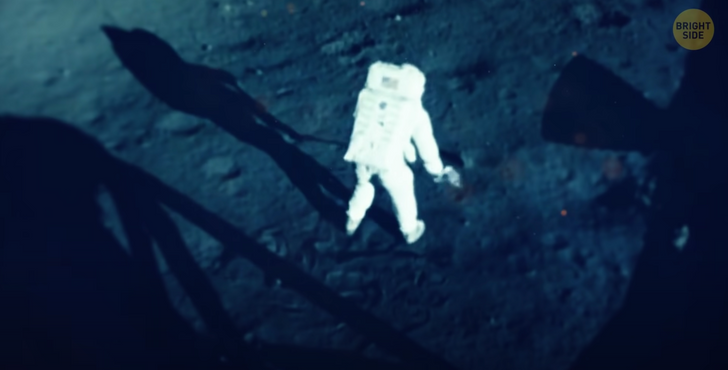
In the future, we plan to resume missions to the Moon. New landers will explore the surface of our satellite to find natural resources there. It’s also a great place to test new rovers. We’re even going to build something like the International Space Station in the Moon’s orbit. The Lunar Orbital Platform-Gateway.
It’ll be a convenient platform for exploring our satellite and launching spacecraft into distant space. If you start from here, the spacecraft won’t need to spend almost all its fuel to overcome the force of Earth’s gravity. So such a station would save fuel and money.
Scientists hope that we’ll be able to mine water from the Moon’s surface. It’s been proven that there’s ice there. Mostly at the bottom of craters where the sunlight doesn’t reach. Perhaps we’ll send a rover there that can drill down a few feet into the surface, searching for water.
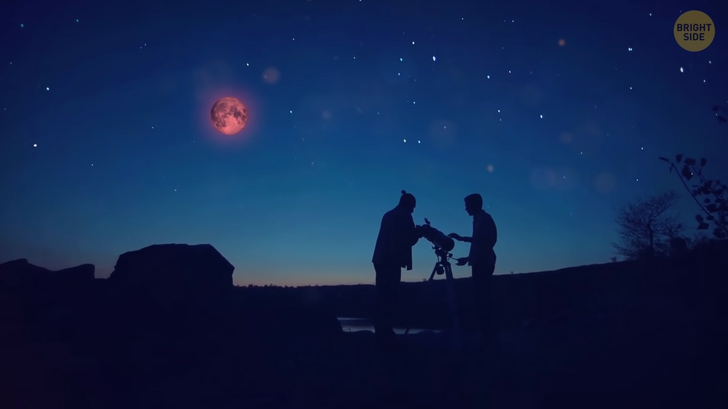
Humanity already has the technology to build a full-fledged colony there. It would take up to three days to get there. We just need to get enough solar panels and building materials to the Moon. There’s no atmosphere on the Moon. So potential lunar inhabitants would be defenseless against solar radiation.
We would have to build houses underground to provide protection. Modern 3D printers will help make construction easy and fast. However, food and water supplies can only be maintained by constant supplies from Earth. The same goes for oxygen. Each rocket launch costs millions of dollars, so for now, colonization of the Moon is in question.
The Moon could also become an object for space tourism. Imagine — A spaceship launches from Earth, three days on the road, and you’re orbiting the Moon. The lunar module undocks, and you land on the surface. You ride the rover, explore the craters, then return to the lander. The engines start, the lander returns you to orbit, you dock with the ship and return to Earth. Sounds like some pretty great plans for a week’s vacation.











